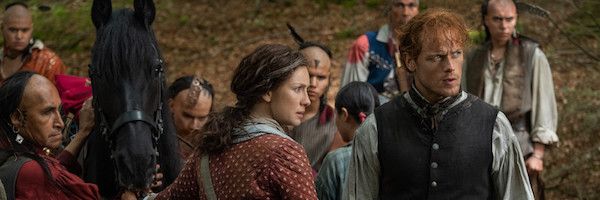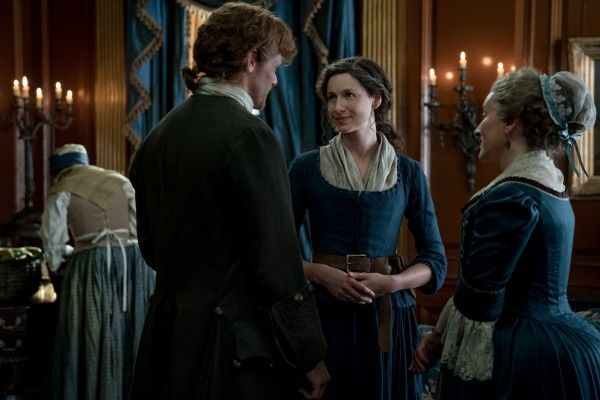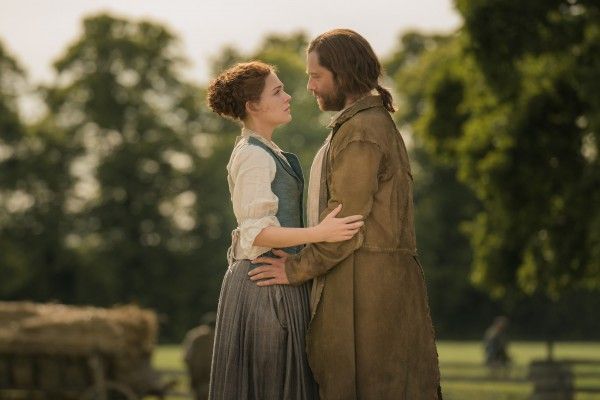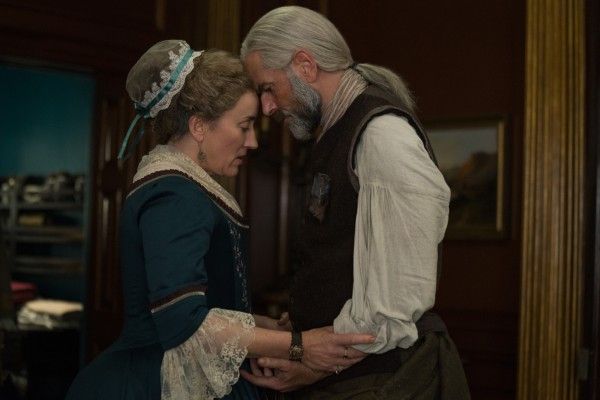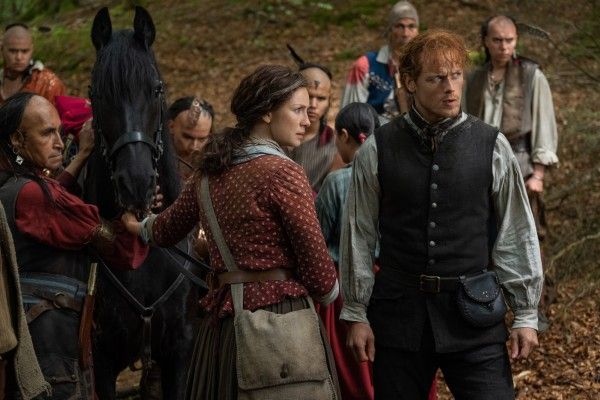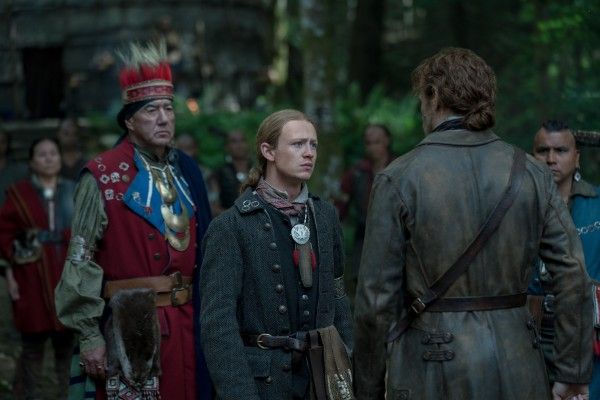Watching the Outlander Season 4 finale, “Man of Worth,” made me think of when I saw Harry Potter and the Order of the Phoenix. I went with a friend who had only seen the movies and not read the books, and she was thoroughly confused by the end of it. Phoenix played out like the most basic Cliff Notes of the book itself; to keep the runtime manageable, it skimmed through plotlines and emotional beats needed to really make it work. It made sense to me only because I had read the book, and could fill in what the movie didn’t cover. But for my friend, it was a hollow combination of scenes that didn’t add up to much.
One of the biggest moments of confusion in “Man of Worth” was Ian’s decision to join the Mohawk, which the show hardly set up. Basically, we know that he can speak some of their language and has some interest in their culture, but devoting his life to being a Mohawk seemed like an exceptional leap for those who — like me — have not read the books. As Andrea Reiher points out in her piece about Ian's decision, the book Drums of Autumn includes a budding romance Ian has with a Mohawk woman. Now that makes more sense, and would have been an interesting juxtaposition to the story of the priest … if the story of the priest — which felt mostly like emotional manipulation — needed to happen at all.
The EPs for Outlander have an unenviable task of breaking down the biggest story beats from Diana Gabaldon’s expansive book series and turning them into workable episodic narratives. With the season running a mere 13 episodes, the show had to introduce a lot of new people and places without having much time to do it. But the show has to work for viewers who don’t read the books; it can’t work as shorthand for material that itself hasn’t presented.
Outlander Season 4 was already starting in a difficult place, with the story moving from Scotland to the United States and focusing on early American history. But as I wrote in my initial review, what always saves Outlander even from the most unfortunate narrative choices is the connection between the leads, and how cozy and homey it feels. Time spent on Fraser’s Ridge, as Claire and Jamie forged their new life, became as quietly compelling as anything the show has ever done. And yet, that didn’t last. As the series moved through the back half of its episodes, attention was turned increasingly upon Brianna and Roger, with at least one episode passing by without Claire or Jamie even being a part of it. There is a supposition here that we are as invested in Brianna and Roger’s story and woes as we are with our lead couple, but that isn’t necessarily the case. It says a lot that by the end of “Man of Worth,” I was more excited by and interested in Murtagh and Jocasta’s sudden romance than the young upstarts.
This season was also pretty uneven in its desire to tell the stories of people of color. Though Claire is immediately upset and uncomfortable staying at a house that is run on slave labor, Brianna (the even most modern person there!) doesn’t seem particularly bothered by it. There are also some attempts early on for Claire to make peace with the people of a local tribe, but it didn’t really go anywhere. So many episodes, especially later in the season, featured the Mohawk, but they were never treated with any depth or nuance. The focus was always on Roger and his pains, but it wasn’t even clear what the woman’s position was in the tribe who came to Claire asking for the Otter Tooth’s stone, and what it meant for her and her people to be banished. (Speaking of which, wasn’t it almost funny how the scene cut immediately from the Mohawk’s hostile takeover of the Fraser’s camp to them all sitting around the fire being friendly?)
One of the most egregious narrative skips this season was ending an episode with Roger wrestling with whether or not he should go back through the stones after his escape from the Mohawk, and starting the next episode with a dream that reveals he had been recaptured (though not killed or seriously maimed for his transgression). It was like there was a missing scene from right before the episode, or perhaps something left off of the previous one. It was sloppy, like some of the CG early in the season on the riverboat, and the first shot of the landscape seen from Fraser’s Ridge. (These rushed moments are what also made the Season 3 finale a questionable one).
In the after-episode interview with the EPs, it was revealed that the original season ending was going to be Brianna seeing her parents walking up to the plantation without Roger, and her asking where he was before the scene cuts to black. Thankfully, they didn’t go with that ending, instead letting the reunion play out until soldiers show up with a letter for Jamie, calling him on his promise to support the British and forming a militia to hunt down Murtagh. Murtagh is an example of the show doing a great job of changing something from the books and making it work really well, and that was a much more intense note to end on than Brianna asking where Roger was — especially because that again puts the focus on their relationship over Claire and Jamie. Setting up Season 5 as Jaime finding a way to keep his land and not betray his friends is incredibly compelling. Wondering if sad-sack Roger decides to wander back (though not change clothes) to Brianna and that tumultuous relationship is far less so.
But because its best moments still outweigh the questionable, Outlander continues, for better or worse, to hold me completely captive. It’s a show I very much enjoy watching, swooning over the costuming and enjoying some of the humorous flourishes and adventurous turns. But this was a messy season. It didn’t make the show unwatchable or worth giving up, but it was chaotic and somewhat disappointing. There are very gifted people who make Outlander happen, and actors whose portrayals make us exceptionally invested in what happens (even though I thought Ian’s decision came out of nowhere, I was still genuinely pleased to see him make it through the gauntlet and celebrate with true joy). But the series needs better narrative cohesion to really work, especially for those of us who are just viewers of the series without the books to help back things up. We love spending time in this world and exploring the relationships within it; there’s no need to rush.

